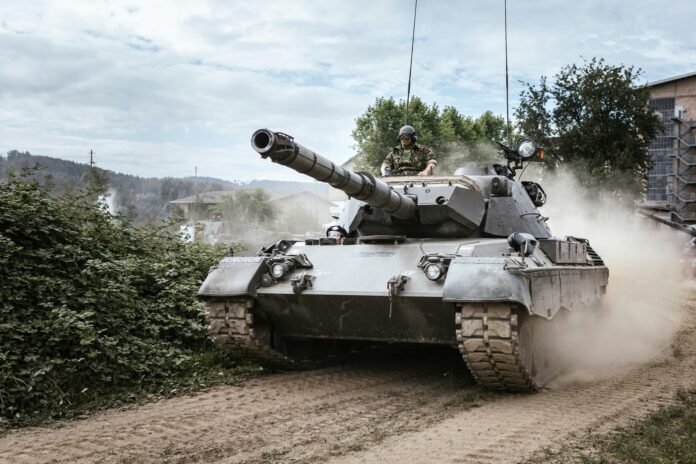Storm Front: The Evolution of U.S. Mobile Air Defense Systems
From Flak to Futuristic: A Century of Innovation
The battlefield is constantly evolving, and so too are the threats faced by modern militaries. From early anti-aircraft artillery to cutting-edge missile defense systems, the United States has continuously refined its mobile air defense capabilities to counter aerial threats ranging from enemy aircraft to hypersonic missiles. This article explores the evolution of U.S. mobile air defense systems, highlighting key innovations that have shaped the modern battlefield.
Early Anti-Aircraft Efforts: The Birth of Mobile Air Defense
During World War II, the U.S. military relied on towed anti-aircraft guns such as the 90mm M1 gun, which proved effective against enemy bombers. These systems, while powerful, lacked mobility and required significant logistical support. As the Cold War progressed and air threats became more sophisticated, the need for self-propelled, rapid-response air defense systems became clear.
Cold War Developments: Mobility Meets Firepower
The advent of jet aircraft and missile technology in the mid-20th century necessitated faster and more mobile air defense solutions. The M163 Vulcan Air Defense System (VADS), introduced in the 1960s, mounted a 20mm rotary cannon on an M113 armored chassis, providing a mobile, rapid-fire response to low-altitude threats. Alongside it, the MIM-72 Chaparral missile system offered a surface-to-air missile (SAM) alternative, enhancing the Army’s air defense capability.
The Emergence of High-Tech Missile Systems
As threats evolved, so did U.S. air defense. The 1980s and 1990s saw the introduction of the MIM-104 Patriot system, which provided long-range missile defense against aircraft and ballistic missiles. While not traditionally considered a “mobile” system, Patriot units could be repositioned relatively quickly, offering flexibility on the battlefield. Meanwhile, the AN/TWQ-1 Avenger system, mounted on a Humvee and armed with Stinger missiles, became a highly mobile solution for short-range air defense.
Modern Advancements: Integrated and Networked Defense
In the 21st century, the U.S. has prioritized integrated air and missile defense (IAMD), linking various systems into a seamless network capable of detecting and neutralizing threats in real time. The Terminal High Altitude Area Defense (THAAD) system has provided a crucial capability against ballistic missiles, while the Indirect Fire Protection Capability (IFPC) program seeks to enhance defense against drones, cruise missiles, and rockets.
The Future of U.S. Mobile Air Defense
The future of U.S. mobile air defense will be shaped by advancements in artificial intelligence, directed-energy weapons, and hypersonic missile interception. The U.S. military is actively developing high-energy laser systems, such as the Directed Energy Maneuver-Short Range Air Defense (DE M-SHORAD), which promises a cost-effective and highly mobile countermeasure against drones and missiles. Additionally, next-generation interceptors and radar systems will improve the speed and accuracy of threat detection and engagement.
Conclusion
From the flak cannons of World War II to sophisticated missile defense networks of today, the U.S. military has continuously adapted its mobile air defense systems to meet evolving threats. As technology progresses, the future promises even more advanced solutions, ensuring that American forces remain protected against aerial threats on the modern battlefield.





